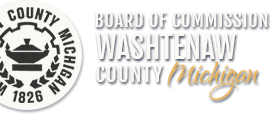By Donna Iadipaolo / WLD
Father James Conlon is the current beloved pastor of Saint Francis of Assisi Church in Ann Arbor where he has served in that capacity for the past seven years. But “Father James” is originally from Sligo, Ireland and, therefore, has a unique perspective on Saint Patrick’s Day, how it is properly celebrated, and its history.
“I am originally from Sligo in the North West of Ireland and have been in the U. S. for over twenty years,” clarified Father James. “Sligo is better known as ‘Yeats Country’ — named after the poet and laureate W.B. Yeats who spent a lot of his childhood there and used those memories in his poetry including the famous ‘Lake Isle of Innisfree.’”
Father James was a lawyer before becoming a priest. While he has not celebrated Saint Patrick’s Day in Ireland in a long while, he does have good recollections of the days when he was younger.
“As it has been over 20 years since I was in Ireland for Saint Patrick’s Day, I suspect that the style and nature of celebration has changed over that period,” he said. “Growing up it was primarily a family day—as our national patron, it was a day of obligation and most people did go to Church, then back home to celebrate with family. Today, alas, that is no longer true.”
 While it seems that many in Ireland and in the U.S. regard Saint Patrick’s Day as a time for festivities, Father James would like people to keep the holiness of the day in mind as a day to celebrate Irish pride. For instance, the main point of the day is not to drink excessively, but to recall some of the holiness and heritage associated with Saint Patrick.
While it seems that many in Ireland and in the U.S. regard Saint Patrick’s Day as a time for festivities, Father James would like people to keep the holiness of the day in mind as a day to celebrate Irish pride. For instance, the main point of the day is not to drink excessively, but to recall some of the holiness and heritage associated with Saint Patrick.
“The impression I get is that it has become a party day—with lots of drinking and celebrations,” Father James confessed. “Yes, it is right to celebrate, but we shouldn’t lose sight of the real meaning of the day—a celebration of the man who brought us to encounter Christ and the gospel message. It has also become a celebration of all things Irish—our culture and heritage, music, and our presence on the world stage. So that is a good thing as we have lots to celebrate and give thanks for.”
Father James also said it is important to know the historical significance of the Saint.
According to Father James, St. Patrick died around 460 AD—long before the Church had an official canonical process to declare a person a saint. So like most of the early saints, Patrick is one who was proclaimed a saint by popular acclaim and practice.
“The success of his long ministry of over 30 years bears witness to his holiness and his life of faithful teaching,” described Father James. “Although we don’t know for certain where he was born, we do know from his writings that he was brought to Ireland as a slave, forced to mind sheep, escaped but later returned of his own volition as a priest, sent by the Pope to continue the work of sharing the gospel with the Irish.”
Also according to Father James, most people do not know that Saint Patrick was not the first to preach the gospel in Ireland, but Saint Patrick was the most successful, and his long ministry was fruitful.
“Right across the island you find places associated with Patrick and his ministry,” said Father James.
According to Father James, certain foods are not particular to Saint Patrick’s Day in Ireland like they are in the United States.
“I understand that the corned beef and cabbage brigade will be upset to hear that this is a rather recent development and is only found here in the U.S.,” joked Father James. “It probably has more to do with shipping regulations and feeding of emigrants as they traveled to the New World in the 19th century. I cannot ever remember eating corned beef and cabbage on Saint Patrick’s Day until I came here to the USA. To be honest, it’s not my favorite food, as cabbage doesn’t need to be cooked for that length of time.”
In Ireland, the green beer phenomenon is not as prevalent as in the United States either.
“[I am] not a fan of green beer—why add vegetable dye to something that is already good?” Father James asked. “The overemphasis on drinking can be problematic—there is so much to celebrate already. And I do believe that it plays into a stereotype of the Irish, that we are all heavy drinkers. Stereotypes are usually built on the exaggeration of one attribute and can run the risk of being misused and misunderstood. But as a race we Irish do like to celebrate, we like to chat and tell stories, recite poetry and we enjoy good company; above all we strive to strike a balance between work and leisure.”
Saint Francis of Assisi Church celebrates all the many cultures that its parish represents. They also conduct Masses in different languages, such as Spanish and Polish, and even have readings or songs celebrating different cultures as well. But Saint Francis Church also does something special for Saint Patrick’s Day.
 “As a multi-ethnic parish, we use the best of each culture to enhance our worship and fellowship,” stated Father James. “During Lent we replaced our usual Coffee and Donuts with Coffee and Soda Bread and so far it has been well received. On March 17th I will celebrate a bilingual mass in Irish and English. Irish, the term we usually use for our native language is one of the Celtic languages and is still spoken in many parts of the island. It’s a lyrical poetic language, very different from the Germanic languages like English! So it lends itself beautifully to liturgy. After that the rest of the day is mine to use as I wish!”
“As a multi-ethnic parish, we use the best of each culture to enhance our worship and fellowship,” stated Father James. “During Lent we replaced our usual Coffee and Donuts with Coffee and Soda Bread and so far it has been well received. On March 17th I will celebrate a bilingual mass in Irish and English. Irish, the term we usually use for our native language is one of the Celtic languages and is still spoken in many parts of the island. It’s a lyrical poetic language, very different from the Germanic languages like English! So it lends itself beautifully to liturgy. After that the rest of the day is mine to use as I wish!”
Father James also took time to describe Saint Francis of Assisi, from Italy, the patron saint of Saint Francis of Assisi Church in Ann Arbor.
“I have often read that Saint Francis is one of the most favored of all saints—that is probably because of his association with the birds and animals,” proposed Father James. “But there is more to Francis and his love of nature. He was one ‘tough cookie’ who faced much turmoil and opposition in his life. You don’t found one of the largest and most successful orders in the Church and not have to deal with human brokenness and vice. But that is what makes the saints so powerful—not their perfection; many didn’t start out that way, but their example, their striving for godliness and for a greater experience of God’s presence in their lives.”
Father James suggested that all people can learn from the lives that saints have lived. There are thousands of saints celebrated by the Catholic Church, and they are represented in almost every culture. There are many similarities in the manner in which they lived their lives.
“If you chose any saint you will always see those same traits—a hunger for God, a desire to seek him, and then a need to share that holy presence with others,” explained Father James. “As one billboard on I-94 reminds us ‘Every saint has a past, every sinner has a future!’”
Father James concluded with blessings and travel tips for all.
“As it is Saint Patrick’s Day, I do encourage everyone to consider a pilgrimage or a trip to Ireland,” he stated. “You don’t have to be of Irish heritage to visit, but I do know that you will enjoy the experience. Guimse beannacht De oraibh go leir! God bless you all”












